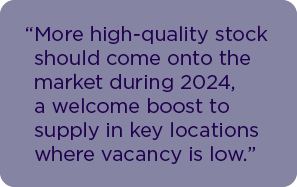Residential sales in a post-pandemic world
The ‘flight to rural’ during the pandemic period saw a rush for more space, better value, and quieter living amid rising flexible working patterns.
House prices in many countryside and seaside locations rose dramatically as a result. Locations such as Cornwall, Devon, Dorset, Norfolk and Wales saw house prices rise by 25-35% over a 30-month period between 2020 and mid-2022. And while urban centres also saw strong price growth, this did not match the rates seen in many rural areas.
An analysis of ten rural counties across England indicates average house prices rose by 27% over the period, whereas England’s top 10 urban centres showed house prices rose by 20% over the same period.

The practice of more flexible or hybrid working following the pandemic is now more widespread than ever. Prior to the pandemic it was estimated that around 28% of London office workers were spending one day a week working from home (Centre for Cities), while various research studies suggest that UK employees now spend on average less than three days per week in the office. This, together with strong demand and high house price growth in rural areas throughout 2021 and 2022 means that more people may now be living further from the office and commuting extended distances as a result. However, as many companies seek to encourage workers back into the office more frequently, we may be on the cusp of a reversal of these patterns.
Preliminary analysis of the same rural counties versus urban centres shows there has been at least a small perceptible change in house price growth between them, with urban locales showing slightly higher growth rates than the rural areas over the last year. Albeit the percentage point difference is small, it may still be the first indicator of changes ahead: urban locations posted an average 3% house price growth in the 12 months to August 2023, while the rural areas posted no growth, marking a dramatic turnaround compared with the growth seen throughout 2021 and the first half of 2022. And while the housing market and rising interest rates will have had an impact on this, the difference between rural price growth and urban price growth may well be a post-pandemic effect.
For 2024 we expect this trend to continue. While flexible and hybrid working is here to stay, the number of days per week that people are going into their place of work is gradually increasing. We expect that businesses will further try to encourage workers back to the office more often. In some extreme cases this may result in some homeowners opting to move back closer to their urban workplace, and at the very least we expect that the flight to rural and countryside locations will continue to reduce. We therefore expect urban centres to outperform in terms of house price growth over the medium-term horizon.






 well as longer-term shifts. 2023 has seen a return to take-up levels more similar to those seen during the five years prior to the pandemic, which were above longer-term averages. 2024 should see this level of demand continue. More high-quality stock should come onto the market as subleases during 2024 as occupiers release surplus space, a welcome boost to supply in key locations where vacancy is low.
well as longer-term shifts. 2023 has seen a return to take-up levels more similar to those seen during the five years prior to the pandemic, which were above longer-term averages. 2024 should see this level of demand continue. More high-quality stock should come onto the market as subleases during 2024 as occupiers release surplus space, a welcome boost to supply in key locations where vacancy is low. 









